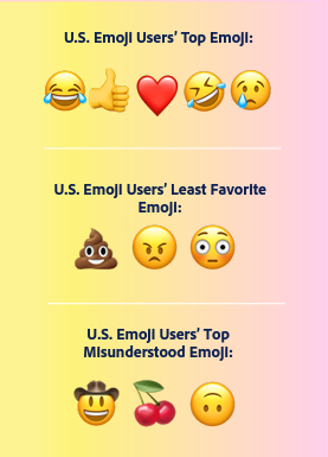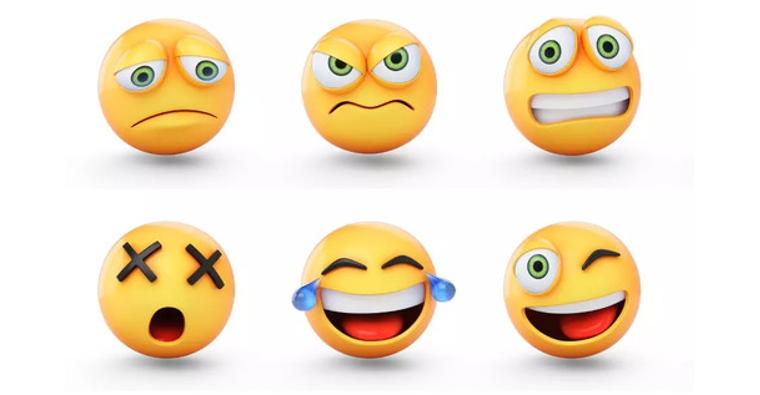Emoji have proven to be well suited to the emotional heavy-lifting needed when words fail. Just be sure they still mean what you think.
Consider the popular ‘thumb’s up’ emoji that exploded into use during the 2010s to denote approval. Today, its meaning has changed, depending on the age of the person sending or receiving it.
According to Adobe’s 2022 U.S. Emoji Trend Report, many Gen Zers now say a “thumb’s up” emoji is “passive aggressive” and can signal confrontation. A recent exchange between Reddit users affirmed that younger workers often interpret the thumbs up emoji as an expression of sarcasm and dismissal that can be “hurtful” and confusing, especially to those working in hybrid or fully remote work environments.
Another emoji, the one that sneezes, is also being re-appropriated by GenZ. Introduced in 2016 to suggest a minor illness was afoot, this emoji no longer means you’re sick. Many GenZers now use it to signal approval, as if to say “That’s sick!” (which, in GenZ vernacular, means “That’s good!).
“Using emoji is a sign of emotional intelligence. Being able to communicate emotionally digitally is becoming increasingly expected, and desired among those still working from home.”
– Paul D. Hunt, typeface designer and font developer at Adobe

And that’s not all. Beware the long-standing, “smiley face” emoji, particularly those used on Microsoft Teams. A recent survey by Duolingo and Slack found that 74% of respondents have experienced a misunderstanding at work with an emoji, and use of “smiley face” emoji can become terribly misunderstood by older workers. “Sometimes when we send the smiley face, we are actually not smiling at all,” one GenZ survey respondent told Slack researchers.
What to do? Adding text—or pairing emoji to clarify meaning—is strongly advised by Adobe to clear up any confusion. Half of U.S. emoji users, Adobe says, are more likely to respond to a message if it contains an emoji (50%) but 80% of emoji users agree you should only use emoji which have meanings you fully understand in conversations.
Of course, not all emoji need translation. Expressions of laughter and love remain the most universally popular and clearly understood, Adobe says. And with emoji use now incorporated into Slack, Microsoft Teams and more, using emoji in messages is no longer considered totally unprofessional, with 69% of survey respondents saying they can positively impact a sender’s likability in hybrid workplaces.
But with 3,664 emoji symbols now available—and expanding—don’t assume fluency without checking.
Need to brush up? Check out Adobe’s 2022 U.S. Emoji Trend Report along with the Full Emoji List, v15.0 — a kind of dictionary for emoji characters and sequences. Also helpful: the emojis wiki, an encyclopedia of emoji meanings and examples of emoji combinations designed to help you improve your communication among key audiences.
Illustrations: Adobe 2022 U.S. Emoji Trend Report, with permission.

